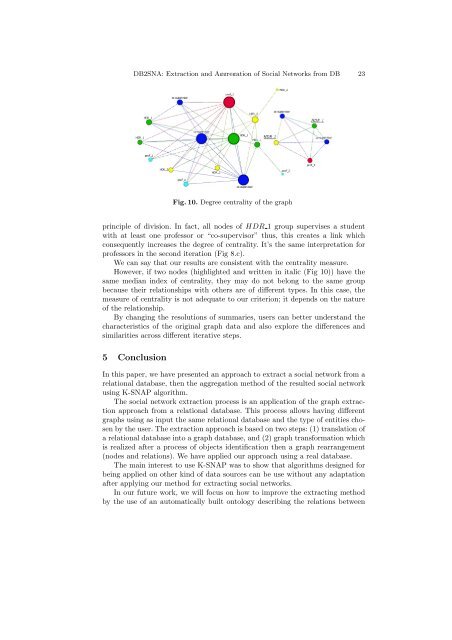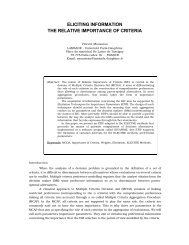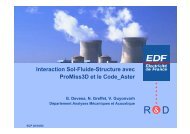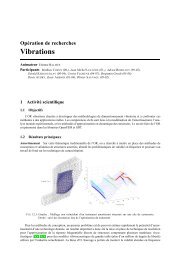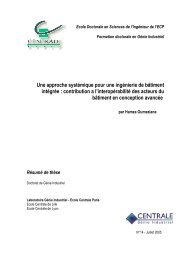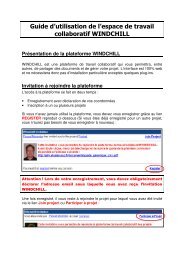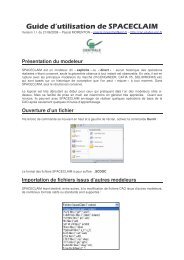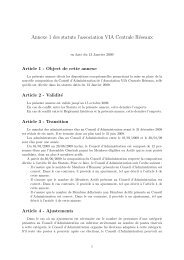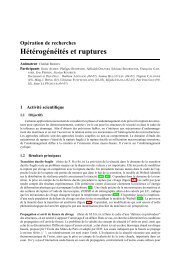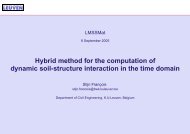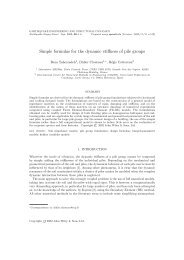View - Ecole Centrale Paris
View - Ecole Centrale Paris
View - Ecole Centrale Paris
Create successful ePaper yourself
Turn your PDF publications into a flip-book with our unique Google optimized e-Paper software.
DB2SNA: Extraction and Aggregation of Social Networks from DB 23Fig.10. Degree centrality of the graphprinciple of division. In fact, all nodes of HDR 1 group supervises a studentwith at least one professor or “co-supervisor” thus, this creates a link whichconsequently increases the degree of centrality. It’s the same interpretation forprofessors in the second iteration (Fig 8.c).We can say that our results are consistent with the centrality measure.However, if two nodes (highlighted and written in italic (Fig 10)) have thesame median index of centrality, they may do not belong to the same groupbecause their relationships with others are of different types. In this case, themeasure of centrality is not adequate to our criterion; it depends on the natureof the relationship.By changing the resolutions of summaries, users can better understand thecharacteristics of the original graph data and also explore the differences andsimilarities across different iterative steps.5 ConclusionIn this paper, we have presented an approach to extract a social network from arelational database, then the aggregation method of the resulted social networkusing K-SNAP algorithm.The social network extraction process is an application of the graph extractionapproach from a relational database. This process allows having differentgraphs using as input the same relational database and the type of entities chosenby the user. The extraction approach is based on two steps: (1) translation ofa relational database into a graph database, and (2) graph transformation whichis realized after a process of objects identification then a graph rearrangement(nodes and relations). We have applied our approach using a real database.The main interest to use K-SNAP was to show that algorithms designed forbeing applied on other kind of data sources can be use without any adaptationafter applying our method for extracting social networks.In our future work, we will focus on how to improve the extracting methodby the use of an automatically built ontology describing the relations between


